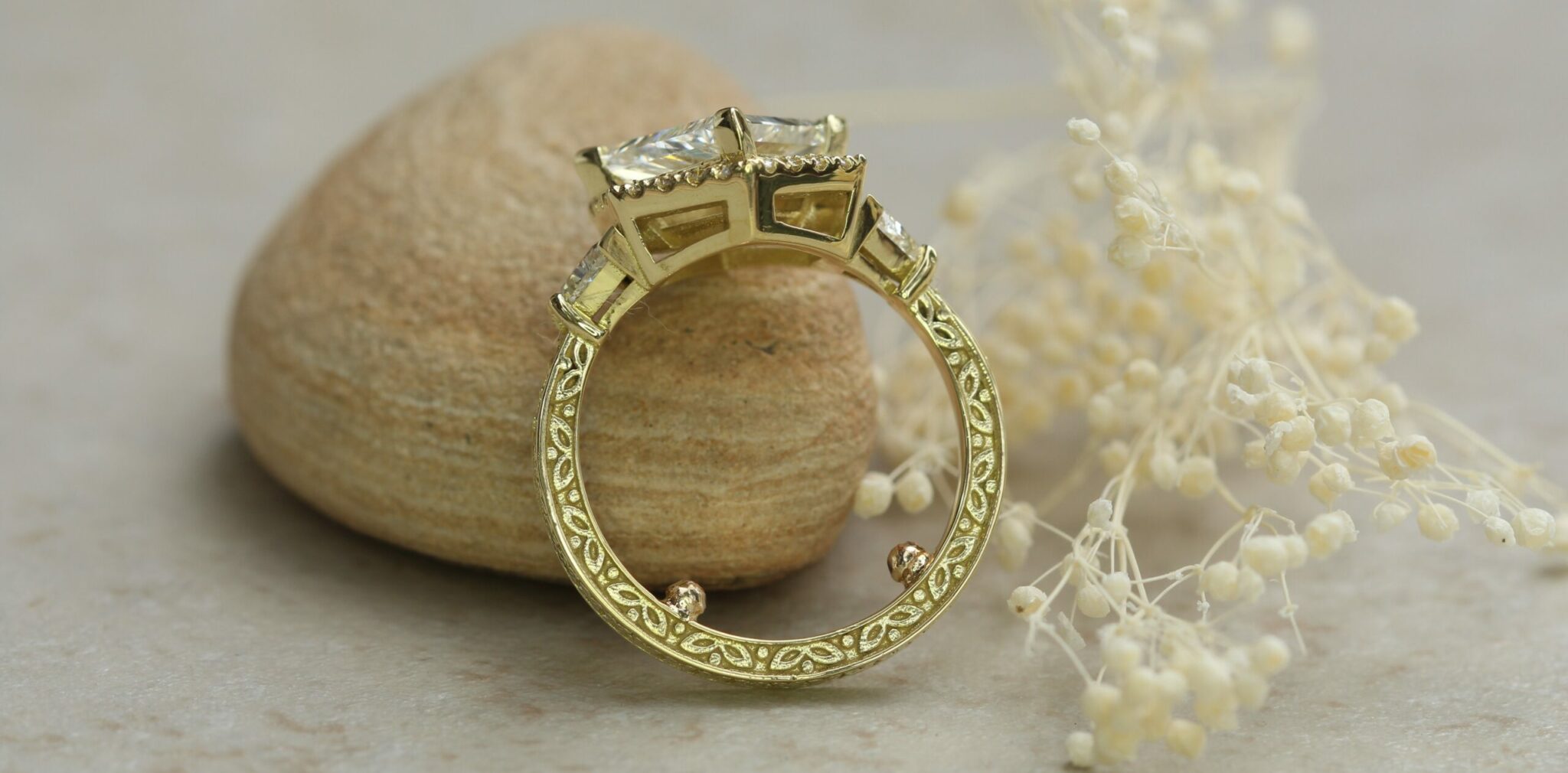Some rings are easy to size. Others are more difficult. In this blog, I’ll show you all the ways my Master Jeweler husband Avo does it!

REGULAR SIZING
In the picture above is a classic example of a ring that can be regularly sized. It doesn’t have any stones or detail that go all the way around. So what we do is at the very back of the ring, we carefully cut it. Metal is either removed to make it a smaller size, or it is added to make it a larger size. It is carefully soldered back together, cleaned and polished and you’ll never know it was touched!

STRETCHING OR SHAVING
This is typically done with plain bands or bands without a lot of detail that only need to be sized up a tiny bit. The ring is placed on a jeweler’s mandral or in a special streching machine and gently stretched. Or we can shave a tiny bit of metal from the inside of the ring if it’s a thick ring which will size it up a little.

SIZING PATCH
Now we start to get into the more difficult sizings. Take a look at the wedding band and engagement ring above. I LOVE the beautiful detail on the gold! It’s also a clever away to give an illusion that the diamonds go all the way around when they don’t.
But this beautiful detail can get ruined in a regular sizing where the ring is cut and soldered. One way to get around this is to put what is called a sizing patch – when the ring is cut, rather than trying to maintain the intricate detail (which almost never works perfectly) my husband makes the area that was sized smooth. This has been done with the engagement ring. Since you don’t generally look at this part of the ring, no one is the wiser.

SIZING BEADS
For those that don’t want to have a sizing patch, this is a great option! See in the above picture how intricate the detail on this band is? The bride needed it resized but didn’t want the band to spin and show a sizing patch. So my husband inserted carefully placed “beads” of metal on the inside of the band. Contrary to how they look, since they are carefully placed in the fleshiest part of the finger, they are quite comfortable once you’ve gotten used to them. And they are not visible once the ring is on.
Did you know? Sizing beads are also used for those that have knuckles that are much larger than the part of their finger that houses the ring. Because the knuckle is larger, the ring must be made in a size that can fit over the knuckle, but then it tends to spin and flop. The sizing beads allow a larger ring size to fit over the knuckle, but then hold the ring in place once it’s on.
Sizing beads can also be used to stabilize rings that have very large center stones that want to flop side to side.
RECASTING
For those that have intricate detail or stones going all the way around that do not want any of these options, the option is always available to completely recast the ring. This of course is a more expensive option as my husband has to very carefully remove all the stones in the ring, recast it, and reset them all again. But for those that want that perfect look, we gladly do it!

